Episodes of Lake Marathon: 07 Hebbal lake
Hi viewers, welcome to another episodes of Lake Marathon. Well, you all might have heard about the famous Hebbal lake of Bengaluru and some of you might have visited too. But not many knows that there is a lake in Mysore with the same name. Yes, today I am writing about my findings on Hebbal lake, Mysore. This visit turned my boring lazy Saturday evening to a fantastic and a productive day!
Before I visited this lake, I had just heard it's name. I had to use my Google maps to drive as I didn't even know where it was located.
Hebbal Lake, Mysuru, India
This is the entrance of the Hebbal lake and I had no clue what I will be finding inside. I was ready to count on common crow, mynas and bulbuls, and I was proved wrong. Well, let me walk you through the lake and witness the beauty of the lake.
The two elephant statue was very eye-catching and unique things to find in any of our lakes.
Sunrise captured from the Hebbal Lake Mysuru
Avifauna of Hebbal Lake:
1. Common Coot:
Inside the fenced gate, there was a huge lake, lonely and calm with one or two aquatic birds swimming here and there. Common coot was the first bird I could spot in this lake.
Common coot
2. Spot billed duck:
Far from the coot, a lonely spot billed duck was found. Moving forward I found that the duck is not alone and it has a partner, and it didn't take any long for me to find out that the ducks are not just two they are here in herds. Spot billed duck is named so because, there will be a red spot below the beak region.
3. Oriental Darter/Snake Bird:
Three oriental darters or the snake birds were perching on a tree branch. Snake birds are provided with a strong neck muscles and often spread their wings for drying.
Oriental Darter
Feeding habits of oriental darter:
Darters prefers to forage singly and keeps its body submerged in water. It will toss its prey in the air before eating it, isn't it cool!
4. Purple Moorhen:
This is another common lake birds of Mysore, I have spotted this in almost all the lakes that I have visited in Mysore. Its beautiful blueish purple feathers, red head and beaks adds its beauty. It is sometimes very amusing to watch these rail family birds.
Purple moorhen/Swamphen
5. Little egret: Little egret is an aquatic bird belongs to the heron family. Beaks are black in colour and feet are yellow which are the key points to identify this bird. It prefers to feed on the shallow water and predates on fish, mollusks, insects, crustaceans etc.
Little egret
6. Grey Hornbill:
This is the first time I am spotting Grey hornbill in the episodes of Lake marathons, nevertheless, they are one of the most commonly available birds of Mysore, especially in parks, gardens and canopy trees. They are known to feed on fruits but sometimes, it will eat insects, reptiles etc.
Grey Hornbill
7. Rose ringed parakeet:
Indian parrot or rose ringed parakeet is commonly found in the suburban regions, parks, garden etc, in Mysore. This was found on a newly sprouted gulmohur tree branch. Amazed by its beauty! Males have a rose coloured ring near the neck region, while females and young ones either have grey ring or no ring on the neck.
Rose ringed parakeet
8. Painted stork:
This was the first spotting of painted stork of the season, while I have added many pics of these birds in the previous article Ranganthittu Rounds . I was lucky enough to spot at least one in Hebbal lake this season, as I couldn't even find one in Kukkarahali or Karanji lake this year. Wings are colourful with black, white and pink feathers and hence the name painted stork.
Painted Stork
9. Little Cormorant:
Little cormorants are slightly smaller than the Indian cormorant and with a stout beak. This is a solitary bird with black feathers. There are 4 species of cormorants found in Mysore and will capture that in the upcoming episodes.
Little cormorant
10. Common sandpiper:
Again this is the first time I am spotting this bird in the season, I had heard about this bird long back, when I was doing my graduation. This is a small little bird with brownish grey wings and white belly. Feeds near the shallow water.
Common sandpiper
11. Pond heron:
Lake marathon is incomplete without spotting any heron species. And as usual pond heron is the regularly spotted birds in the lakes. This one was found perching on the fence and looking for its prey. Better quality pictures of pond herons are posted in the previous articles.
Pond heron
12. Red whiskered Bulbul:
Red whiskered is a common passerine bird found in Mysore, also common species among bulbuls. They feed on fruits and nectars. Read more about 'Red whiskered bulbul' from the link provided
https://whatsaroundustoexplore.blogspot.com/2021/03/whiskers-wish-to-widespread.html
Red whiskered bulbul
A new bird added to my check list, not much is known about this bird. It was small, brownish in colour with paler belly found in the middle of the bushes and it was quite shy bird.
14. Tree Pipit:
These pipits were found foraging on the lawn of the lake garden. A group of them were found.
Tree Pipit
15. Indian Robin Male:
Couldn't get a perfect still image of this, but this is an Indian robin male species which has black feathers. Females are brown in colour.
Indian Robin Male
16. Red Wattled Lapwing:
Couple of lapwings were found on the park ground and this is another commonly available birds of Mysore. Read more about lapwing: https://whatsaroundustoexplore.blogspot.com/2020/06/cry-of-lapwing-bird.html
Red Wattled Lapwing
17. White Breasted Kingfisher:
There were couple of kingfishers trying to hide themselves being caught on the lens. These are shy and quick to move birds, hoping to capture better pictures in future.
White Breasted Kingfisher
18. Green Bee Eater:
This green bee eater was the last bird that I could spot during this lake visit. Probably it was waiting for me to see off!
Flora:
The lake has a beautiful park loaded with greenery, most of them will support the existence of the birds and other fauna of the lake and maintain the harmonium in the lake ecosystem.
Ipomea species Asiatic day flower
Scenic Beauty of Hebbal Lake:


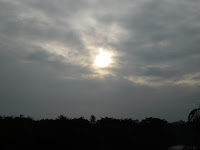









































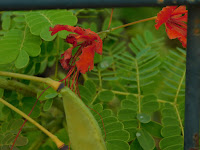





















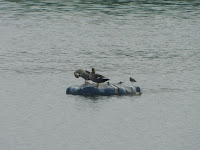
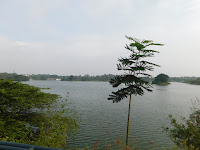

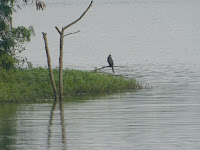


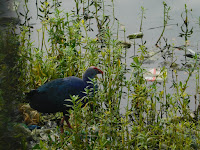













Hi Sangeetha, appreciate your efforts.
ReplyDeleteLakes are so vital to the ecosystem, sad to see they are being used to dump sewage and waste. I wish there was more corporate engagement for the renewal and upkeep of lakes in the vicinity of IT companies at least.
keep up the good work. You should visit the Doddanekundi lake sometime. Right now(24 Mar 2023) it's under renovation, i'm hoping they will fix the lake and walkway before the april showers.
also did you consider posting you blogs on wordpress? it's free like blogspot but you get more features and themes.
regards
Vimal